
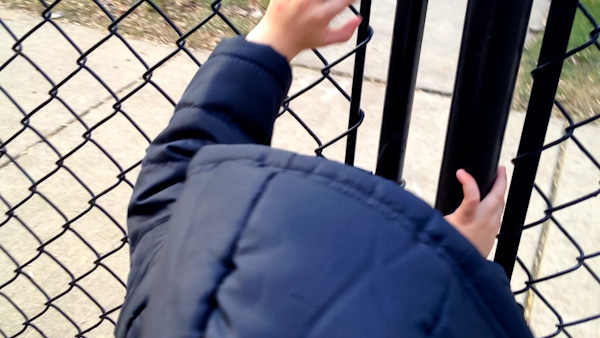


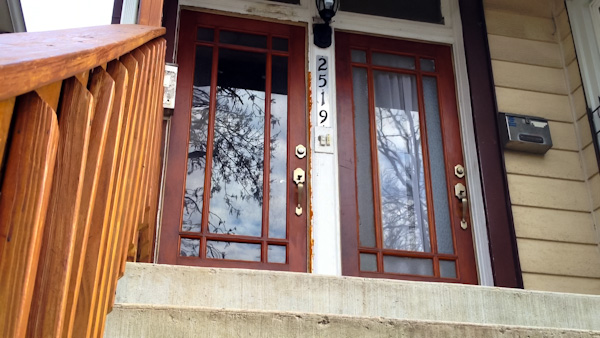
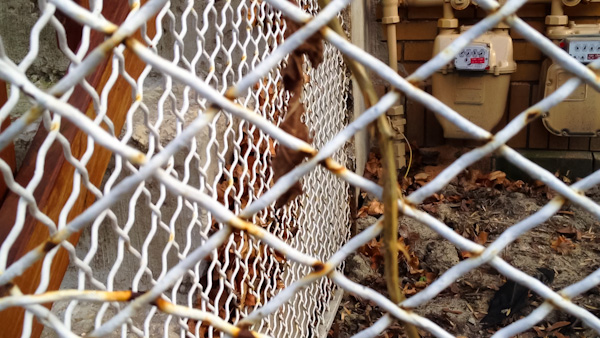
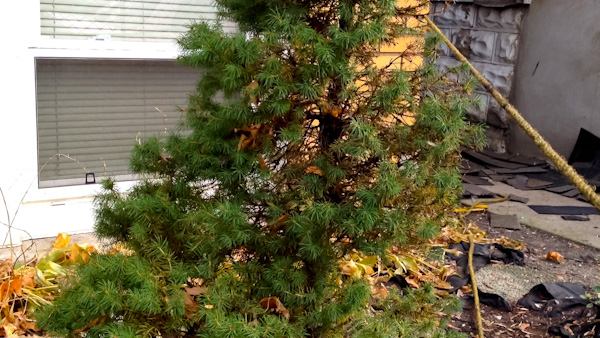
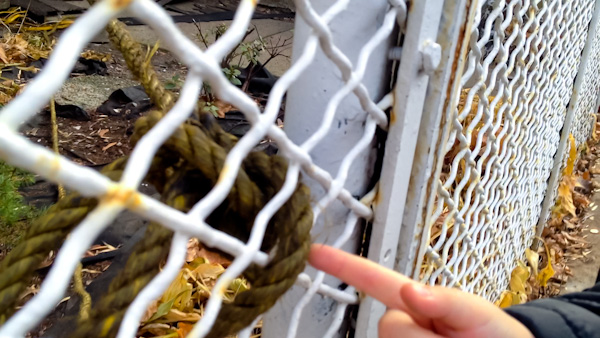
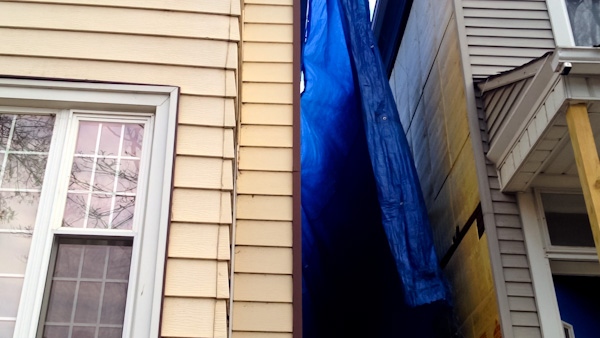

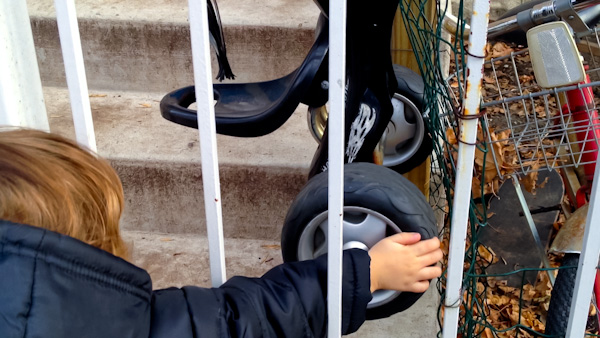
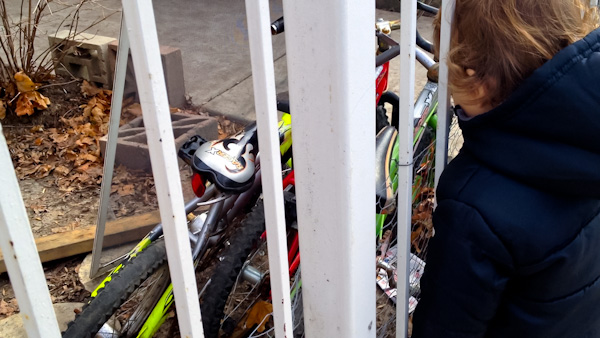




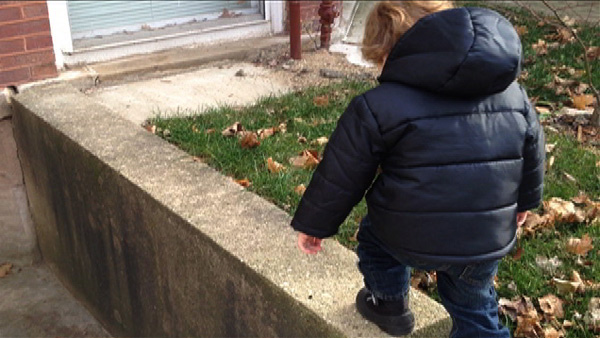
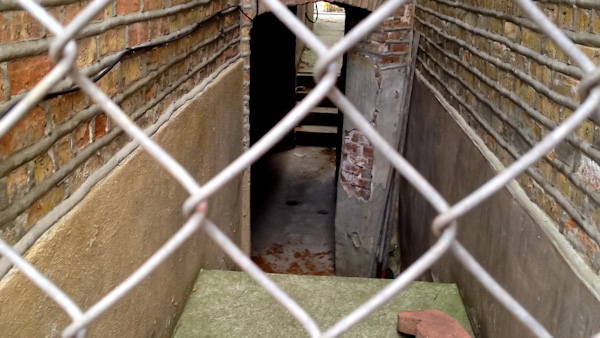
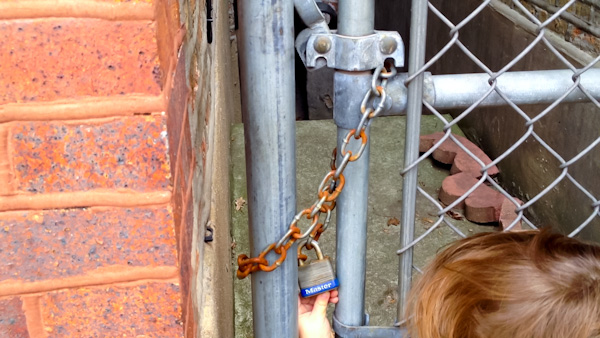
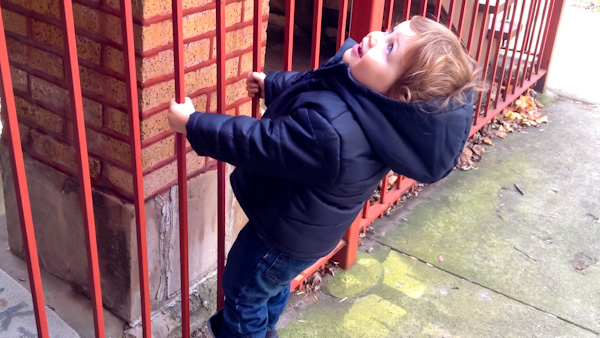

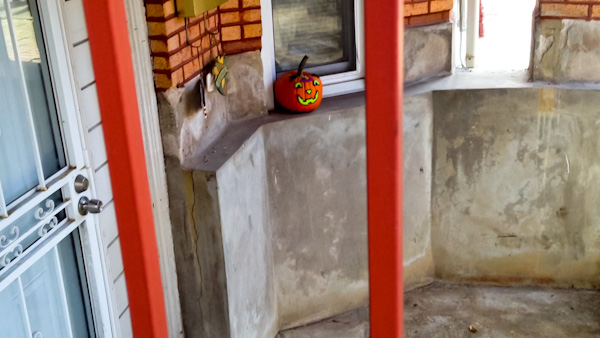


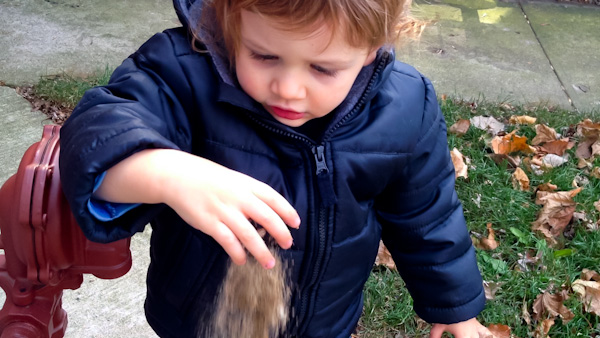
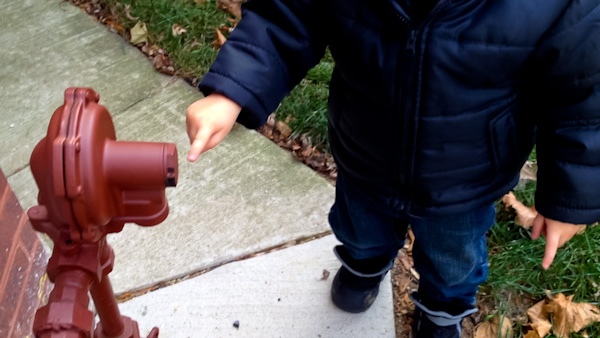

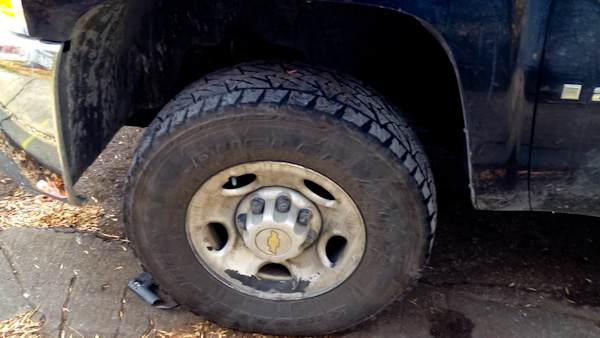

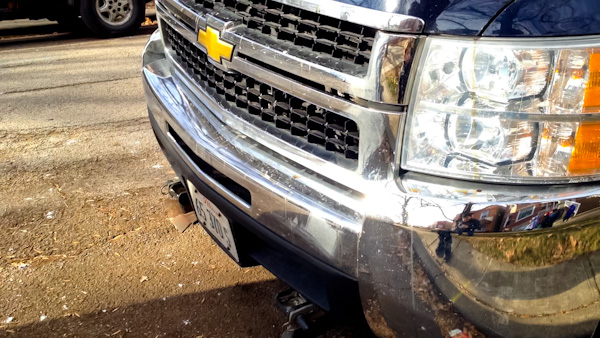
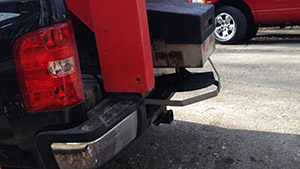

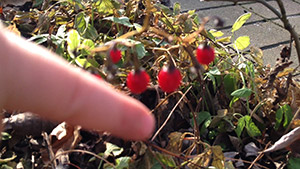
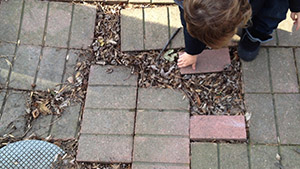
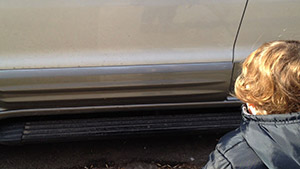
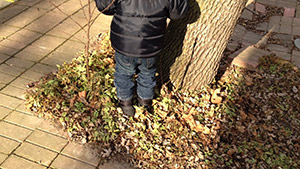

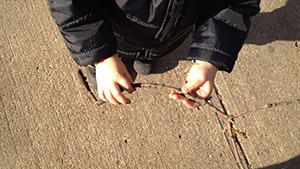



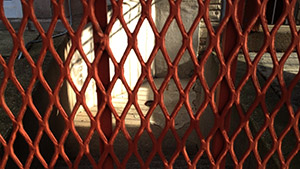
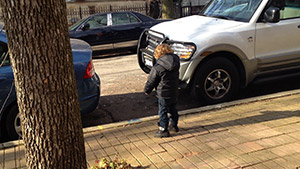

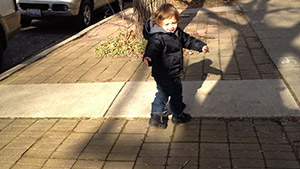
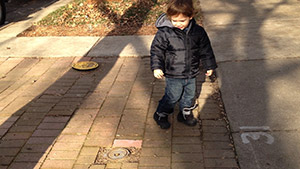
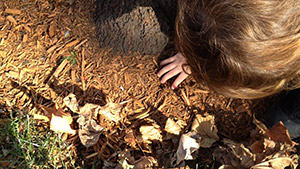
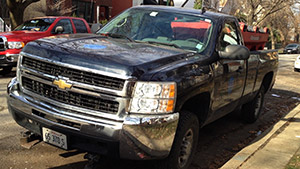

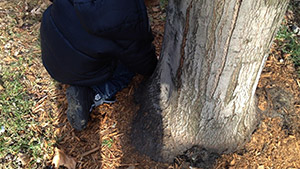

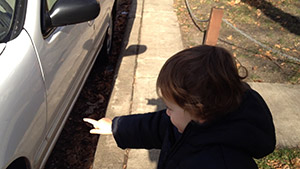
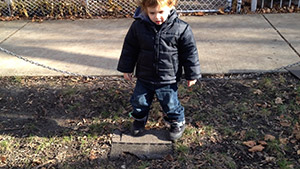
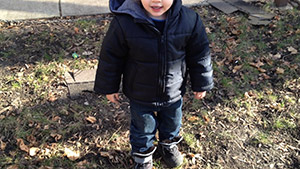
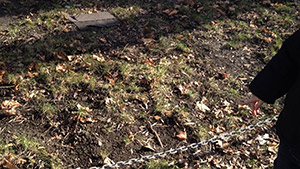
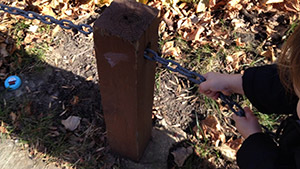
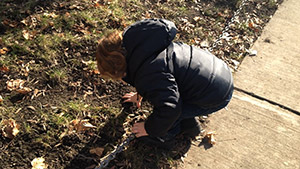



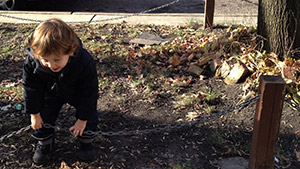
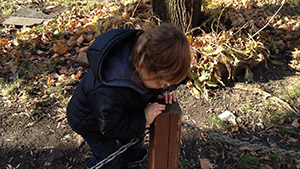
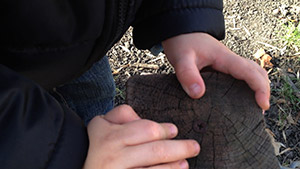



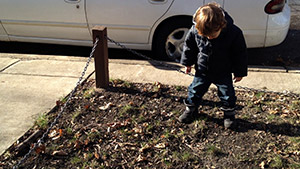

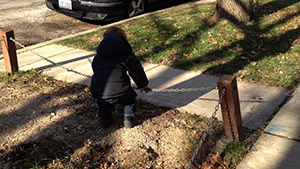
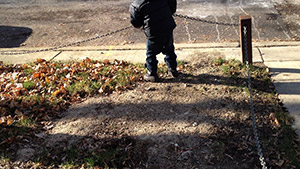
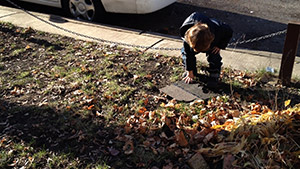
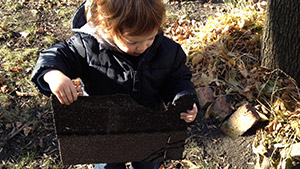

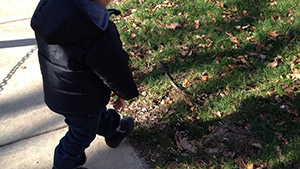


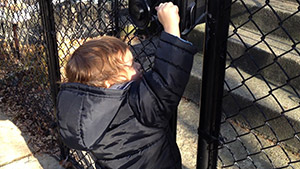
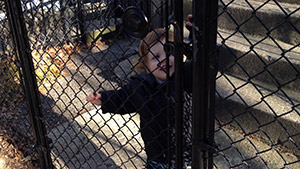
Toddler Dérive
In Guy Debord's "Theory of the Dérive" he describes the dérive as
"... a technique of rapid passage through varied ambiences. Dérives involve playful-constructive behavior and awareness of psychogeographical effects, and are thus quite different from the classic notions of journey or stroll. In a dérive one or more persons during a certain period drop their relations, their work and leisure activities, and all their other usual motives for movement and action, and let themselves be drawn by the attractions of the terrain and the encounters they find there."
For the Situationists the dérive is a technique for exploring the urban landscape to engage in new experiences and new ways of perceiving their surroundings. This practice is seen as necessary because as adults everday life can become predictable and monotonous. Through psychogeographical observation the dérive is meant to break from this and generate authentic experiences of your everyday surroundings. Mapping was often used to document these new ways of seeing an environment.
I find that this way of experiencing the world is what it is like to go out on a walk with a toddler, following their lead. Spending time with a toddler and exploring the world while being led by your senses achieves a very similar effect as it seems the Situationists were after in this practice.
Instructions for a Toddler Dérive
- Invite your toddler to go outside for a walk.
- Go outside beyond your front door and follow your toddler's lead.
- Document your dérive as you go along focusing on the sights and sounds and textures you encounter...
See the interactive map above documenting a Toddler Dérive.
- Follow our path with your mouse to see sights and hear sounds from our drift around the block. The larger the purple dot on the map the longer we were in the spot.
- You can scroll left and right.
- On touch screens tap the dots on the path to see images and hear sounds
- Best viewed on a larger screen with a mouse
To hear audio in Chrome & Safari click this button: Audio On
- Type: Interactive Project
- Date: 2012
©Christy Karpinski All Rights Reserved